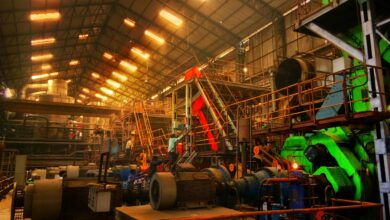Top 5 Use Cases of AI in Manufacturing Value Chain
AI is a game-changer for enterprises. From risk analysis to operations, it has the potential to transform almost every aspect of how companies handle their business. However, when it comes to something as expansive and complicated as machine intelligence, it becomes important to make sure that the technology is deployed in the right way and only across areas where maximum value can be attained. Overuse, underuse, or misuse of AI could do more harm than benefit and cost a company revenues as well as its customers.
To help you find the right direction, here are five key areas within manufacturing operations where AI can make a significant impact.
1. Demand Forecasting & Inventory Optimization
An organization could deploy AI to predict when the demand for a particular product or service is about to rise or fall and adjust manufacturing efforts accordingly. This not only ensures sufficient stocks to meet the demand but also increases customer satisfaction rates. Similar techniques can also be used to predict weak demand periods and slow down manufacturing to prevent spoilage of products and increased warehousing costs.
Notably, personal care brand L’Oréal uses data gathered from social media, weather, financial markets and historical sales to power predictive AI algorithms and inform its manufacturing, inventory and supply chain strategy.
2. Assembly Line Optimization
Operating on a large scale, with thousands of employees and dozens (if not hundreds) of machines, makes it challenging for companies to efficiently manage production resources. For instance, at Marmon Holdings’ McKenzie Valve Plant, officials were looking to determine when their machines were being left idle or overutilized, to alleviate any disruptions in the production process.
The solution was designed using a computer vision algorithm that detects machine utilization in real-time. This system’s ML models, developed by an AI consulting firm, Provectus, were able to accurately detect the color of indicator lights (visual data) on the machines and send notifications when they changed. It helped the officials to keep track of run vs. idle time for every machine and optimize operations and related policies, to ensure a seamless manufacturing process with increased ROI.
3. Quality Control
Just like processes, AI can even help with quality control efforts. Algorithms can be trained to use image-based data to conduct automated inspections and bring uniformity and efficiency to help businesses deliver standardized products with little to no flaws.
A good example of AI deployment for quality assurance is the case of Bridgestone. The company introduced an automated tire assembling system that used sensor data to measure the characteristics of individual tires based on 480 quality items. Then, using this information, it was able to control production processes in real-time, ensuring that all components are assembled under ideal conditions.
The solution brought high levels of precision to Bridgestone’s manufacturing process, increasing uniformity by over 15%.
4. Predictive Maintenance
Flagging issues with heavy machinery and equipment is also a task, but AI can keep track of these systems to send warning signals well before anything breaks down. This can not only save costly repairs but also prevent downtime capable of affecting revenues. After all, the cost of just one minute of production-line downtime can go up to $20,000.
General Motors is one of the companies leveraging computer vision for the maintenance of its assembly robots. The company uses a system that analyzes images from cameras to spot signs of failing robotic components. In a pilot, it detected 72 instances of component failure across 7,000 robots, identifying the problem before it could result in unplanned outages.
5. Safety
Finally, AI can identify safety risks on the shop floor, enabling organizations to avoid accidents that could cost lives and affect their reputation and growth at the same time.
The biggest application here is tracking whether workers are using proper safety gear, but lately, with COVID-19 on the scene, many organizations have also increased focus on maintaining social distance. Amazon, for instance, has developed a system called Distant Assistant. The solution uses camera-based feed and machine learning to identify workers moving within six feet of each other and highlights them in red on the shop floor screen – giving a visual nudge to stay away. Meanwhile, those keeping a safe distance continue to appear in green.
The tech debuted in early 2020 and has since been open-sourced for wider adoption.


